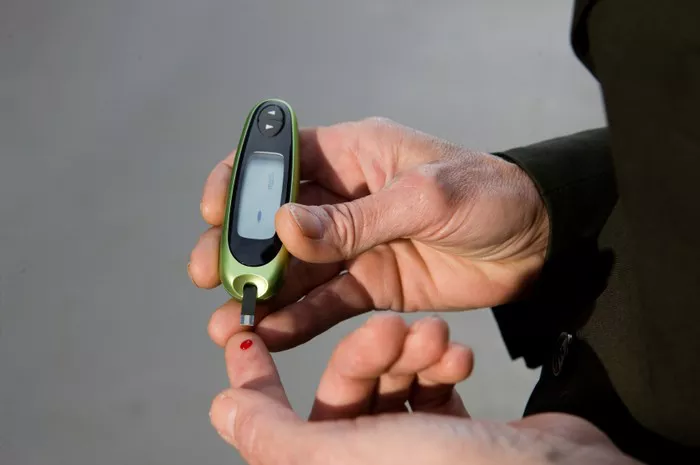This article delves into the different techniques hospitals use to measure blood glucose, the importance of accurate readings, and how these methods have evolved over time. It will also explore the role of glucose monitoring in both acute and long-term hospital care for diabetic and non-diabetic patients alike.
The Importance of Blood Glucose Monitoring in Hospitals
Monitoring blood glucose levels in a hospital is important for a range of reasons. For diabetic patients, it ensures that glucose levels remain within a safe range to prevent both hyperglycemia (high blood sugar) and hypoglycemia (low blood sugar), which can lead to life-threatening complications. In critically ill patients, even those without a history of diabetes, abnormal glucose levels can occur due to stress, illness, medications, or the body’s response to trauma. Therefore, frequent and accurate glucose monitoring is essential for optimizing patient care.
Methods of Blood Glucose Measurement in Hospitals
Hospitals utilize a variety of methods to measure blood glucose levels, each with its own advantages, limitations, and applications based on the patient’s condition, setting, and the need for accuracy. The most common methods include:
- Capillary Blood Glucose Testing (Fingerstick Testing)
- Venous Blood Glucose Testing (Laboratory Analysis)
- Continuous Glucose Monitoring (CGM) Systems
- Arterial Blood Gas Analysis
Each of these methods is used in different scenarios, depending on the patient’s needs, the hospital environment, and the accuracy required.
1. Capillary Blood Glucose Testing (Fingerstick Testing)
Capillary blood glucose testing, commonly referred to as fingerstick testing, is one of the most frequent methods used in hospitals for blood glucose monitoring. It involves pricking the finger to obtain a small drop of blood, which is then placed on a test strip. The test strip is inserted into a glucose meter, which measures the concentration of glucose in the blood.
Advantages of Fingerstick Testing:
Speed and Convenience: Results are typically available within seconds to minutes, making it ideal for quick assessments in both inpatient and outpatient settings.
Portable and Accessible: Glucose meters are small, portable, and easy to use, allowing for frequent monitoring without the need for laboratory equipment.
Bedside Monitoring: This method allows healthcare providers to monitor patients’ glucose levels directly at the bedside, making it particularly useful in critical care settings, such as intensive care units (ICUs) or emergency departments.
Limitations of Fingerstick Testing:
Variability in Results: Fingerstick glucose measurements can sometimes vary due to factors such as improper sampling, testing site, or contamination of the test strip.
Less Accurate than Laboratory Testing: While useful for real-time monitoring, fingerstick testing is generally less accurate than laboratory-based blood glucose measurements, particularly in extreme blood glucose ranges.
Skin Trauma: Repeated fingersticks can cause discomfort, pain, and skin trauma, especially in patients requiring frequent testing.
2. Venous Blood Glucose Testing (Laboratory Analysis)
Venous blood glucose testing involves drawing blood from a vein, usually in the arm, which is then sent to a hospital laboratory for analysis. This method is considered the gold standard for measuring blood glucose levels because it provides the most accurate and reliable results.
Advantages of Venous Blood Glucose Testing:
High Accuracy: Venous blood samples are less prone to contamination and variability than capillary blood samples, leading to more accurate results.
Ideal for Critical Care: In cases where precise blood glucose management is essential, such as during surgery or in critically ill patients, venous blood glucose testing is preferred.
Diagnostic Use: Laboratory-based testing is often used to diagnose conditions such as diabetes or diabetic ketoacidosis (DKA) and to evaluate long-term glucose control through measures such as HbA1c.
Limitations of Venous Blood Glucose Testing:
Time-Consuming: Laboratory analysis takes longer than fingerstick testing, often requiring 30 minutes to an hour or more, depending on the hospital’s workload and laboratory capabilities.
Not Suitable for Frequent Monitoring: Due to the invasive nature of venous blood draws and the time required for laboratory processing, this method is not ideal for continuous or frequent blood glucose monitoring.
3. Continuous Glucose Monitoring (CGM) Systems
Continuous glucose monitoring (CGM) systems are a more advanced method of measuring blood glucose levels. These systems consist of a small sensor inserted under the skin, usually on the abdomen or arm, which continuously measures glucose levels in the interstitial fluid. The sensor transmits data to a receiver or smartphone, allowing healthcare providers to track trends in glucose levels over time.
Advantages of CGM Systems:
Real-Time Monitoring: CGM systems provide continuous data on glucose levels, allowing for real-time monitoring of trends and fluctuations.
Early Detection of Hypo- and Hyperglycemia: CGM systems can alert healthcare providers to impending hypo- or hyperglycemia, enabling earlier intervention and potentially preventing severe complications.
Reduced Need for Fingersticks: While occasional fingerstick tests may still be needed to calibrate the CGM device, the frequency of fingersticks is greatly reduced.
Limitations of CGM Systems:
Cost: CGM systems are expensive, and not all hospitals have access to this technology for every patient.
Accuracy: Although CGM systems provide valuable trend information, they may not be as accurate as venous blood glucose testing, particularly during rapid changes in blood glucose levels.
Requires Calibration: Some CGM devices require periodic calibration with fingerstick blood glucose measurements to ensure accuracy.
CGM systems are typically used for patients who require tight blood glucose control, such as those with type 1 diabetes or those undergoing major surgery.
4. Arterial Blood Gas Analysis
Arterial blood gas (ABG) analysis is another method used in hospitals to measure blood glucose levels, though it is more commonly used to assess respiratory function and acid-base balance in critically ill patients. In this method, blood is drawn from an artery, usually the radial artery in the wrist, and analyzed in a hospital laboratory.
Advantages of Arterial Blood Gas Analysis:
Highly Accurate: ABG analysis provides highly accurate measurements of blood glucose levels, along with other critical parameters such as pH, oxygen, and carbon dioxide levels.
Useful in Critical Care: ABG testing is frequently used in ICUs and emergency departments to monitor patients with severe illness, particularly those on ventilators or with respiratory failure.
Limitations of Arterial Blood Gas Analysis:
Invasive Procedure: Arterial blood draws are more invasive and painful than venous blood draws or fingerstick testing, making them less suitable for frequent monitoring.
Not Primarily for Glucose Monitoring: While ABG testing can measure blood glucose levels, it is typically reserved for more comprehensive assessments of a patient’s overall condition.
Factors Affecting Blood Glucose Measurement in Hospitals
In a hospital setting, numerous factors can affect the accuracy and reliability of blood glucose measurements. These factors must be considered to ensure proper glucose management and patient care:
Timing of Testing: Blood glucose levels can fluctuate based on the timing of meals, medications, and physical activity. Hospitals typically schedule glucose testing before meals and at bedtime, but in critical situations, more frequent testing may be required.
Medications: Certain medications, such as corticosteroids, beta-blockers, and intravenous fluids containing glucose, can affect blood sugar levels and may require adjustments in glucose monitoring and treatment.
Hydration Status: Dehydration or overhydration can affect blood glucose measurements, especially when using capillary blood testing. Proper hydration is important for accurate readings.
Stress and Illness: Physical stress from illness, surgery, or injury can raise blood glucose levels, even in non-diabetic patients. This phenomenon is known as “stress hyperglycemia.” In these cases, hospitals may monitor glucose levels more frequently to prevent complications.
Sensor Placement and Maintenance (for CGM): For CGM systems, sensor placement and calibration are key factors in ensuring accurate readings. Misplaced sensors or poor maintenance can lead to inaccurate glucose data.
Glucose Monitoring in Different Hospital Settings
Blood glucose monitoring is performed across various hospital settings, each with its own protocols and frequency of testing:
Emergency Departments: In emergency settings, rapid glucose testing is critical for diagnosing acute conditions like diabetic ketoacidosis (DKA) or hypoglycemic coma. Fingerstick testing is commonly used due to its speed, while venous blood draws may be done for confirmation.
Intensive Care Units (ICUs): In ICUs, glucose levels are often monitored more frequently, sometimes hourly, depending on the patient’s condition. CGM systems are becoming increasingly popular in ICU settings to provide continuous data without frequent fingersticks.
Surgical Wards: For surgical patients, glucose monitoring is essential before, during, and after surgery to prevent complications such as infections, delayed wound healing, or cardiac events. Venous blood testing is often preferred for its accuracy in critical moments.
General Medical Wards: On general medical wards, glucose monitoring may occur less frequently, depending on the patient’s diagnosis and condition. Fingerstick testing is typically used for regular monitoring, while venous testing may be performed as needed.
See also: Which is the Best Diabetes Machine?
Conclusion
Hospitals use various methods to measure blood glucose, each tailored to the patient’s specific needs, the urgency of the situation, and the required level of accuracy. Whether through fingerstick testing, venous blood analysis, continuous glucose monitoring, or arterial blood gas analysis, the goal remains the same: to maintain glucose levels within a safe range to promote healing, prevent complications, and improve patient outcomes.
By understanding the different methods of glucose monitoring and the factors influencing their use, healthcare providers can better manage patients’ blood sugar levels and ensure the best possible care for individuals with diabetes and those experiencing stress-induced hyperglycemia.
Related topics:
























